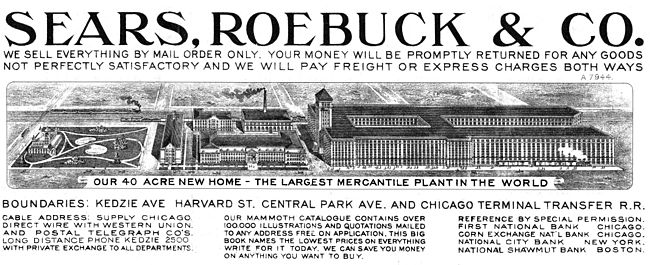 Image © by Brian E. Faulkner
Image © by Brian E. Faulkner Creativity is for people who do creative stuff, right? Artists, who paint and sculpt, write, dance, act and make music.
“But not me!” you might say, “I’m a business person -- and definitely not creative.”
I recall a client who thought that way. Said he could hardly draw a straight line so was not creative. Yet, this man was the most creative businessperson I’ve ever encountered (although I've yet to meet Elon Musk). He thought in odd angles and perceived the future with clarity. He also could share his vision, and in a few short years of very hard work grew his business from a handful of people in a small office to a national brand that dominated its category.
Is there a connection between creativity and business success?
A 2014 study commissioned by Adobe suggests that “creative companies … outperform in both revenue growth and market share.” The study surveyed more than 300 senior managers in a variety of large global firms and found that “58% of respondents from creative companies (those that encourage creative perspective, practices, and culture) said their revenues have strong growth (10%+ year-over-year) while only 20% of less creative companies reported strong revenue growth. And creative companies are 50% more likely to report a commanding market leadership position."
Clearly, one must be cautious in interpreting findings like this since other success factors also may be at play in these organizations. But it stands to reason that leaders who encourage people to color outside the lines and explore the outer edges of opportunity will foster innovation and growth – and also be great places to work, as the Adobe study also found.
Sure, some folks seem to have more "creative" genes than others, just as some people have more innate ability to play sports -- or a musical instrument. You can learn how to play baseball or piano, for instance, and even though you might do a fair job at it, there's not much you can do with your skill beyond enjoy it. But even a kernel of creativity can sometimes lead to big things. I recall Colonel Sanders from time to time and his creative approach to preparing, cooking and selling chicken. He started experimenting with his "secret recipe" during the 1930s in Kentucky by offering chicken to patrons of a gas station he owned (at age 40). A variety of learning experiences, several failures and 20 odd years later, he hit the road to sell restaurants on purchasing franchised rights to chicken done his way. Even his gravy was a cut above, enough to make you want to "throw away the durned chicken and just eat the gravy." By the time he set out to sign up franchisees he was nearly broke, but he persisted -- and found not only that people liked his Kentucky Fried Chicken (which was pressure fried instead of pan fried) but that it also boosted sales for the restaurants who chose to buy in. Today, Harlan Sanders' creative approach is the basis for one of the world's most successful brands.
So how can you put creative thinking to work for your business?
Kenichi Ohmae, a long-time managing partner with McKinsey & Company, recommended in his Mind of the Strategist that to get a fresh look at a problem or product it helps to break it into bite-sized bits: features, benefits, base assumptions, competitive advantages, market perspective, etc, then reassemble the bits in new ways -- and question everything (a more non-linear approach to S-W-O-T discussions). The mere act of decoupling yourself from predictable thinking can open up new worlds of possibility, as long as you recognize that false starts and frustrations are a valuable part of the process - along with the courage to see your way through. If that sounds like old-fashioned anything-goes brainstorming, well … it is. It’s about opening yourself to new thinking based on the knowledge and experience of others.
Edwin Land, of Polaroid fame, observed that most major discoveries at his company were made by people able to take a “fresh, clean look at the old, old knowledge.” Like a client I consulted to recently, which turned out to have a revolutionary product benefit hidden deep within their story, an uncommunicated competitive advantage with the potential to make a hugely profitable difference to their customers. It was there all along but just took fresh eyes to see.
Another way to take a clean look at things is through peripheral visioning: looking beyond your normal field of vision, searching outside your comfort zone for fresh perspective … and possibly even enlightenment. If you run a grocery store, study the machine tool business. If you’re in the service business, learn all you can about the marketing of consumer products. If you’re a retailer, get to know how non-profits think. If you've been in business practically forever, get to know a few unrelated startups. Read all you can about them. Get curious! You’ll be surprised how much of what you learn can be applied to your business – that is, if you’re willing to risk leading the way through unexplored territory. If you’re not comfortable doing this yourself, seek out professional creative thinkers and ask them to help (or hire one to think inside your company, as one of my clients did). Wrap people from businesses with different problems and perspectives into your brainstorming, and it won’t be long before you find yourself immersed in a mindspace where stale, predictable thinking gets transformed into creative new possibilities.
My definition of creativity is looking at the ordinary in extraordinary ways (playing off those odd angles). It's a lot like daydreaming, something society encourages us not to do. Some of my most fruitful ideas come during long drives with my mind in idle. A twenty-minute nap gets results, too, although it has taken me a long time to get over the guilt of interrupting a “workday” for a brief snooze. But when you consider that business ideas precede success, spending a chunk of your valuable time thinking seems less crazy to those more accustomed to working inside the box. People once thought powered flight was crazy, but two bicycle repairmen brothers from Dayton dared to imagine otherwise.
Albert Einstein once called imagination “the preview of coming attractions.” So why not get busy imagining your coming business attractions? Not creative?
Don’t believe that for a minute!
TakeAway: Take the risk of seeing, thinking and learning outside your comfort zone. The dividends can be extraordinary.
Content © by Brian E. Faulkner





 RSS Feed
RSS Feed